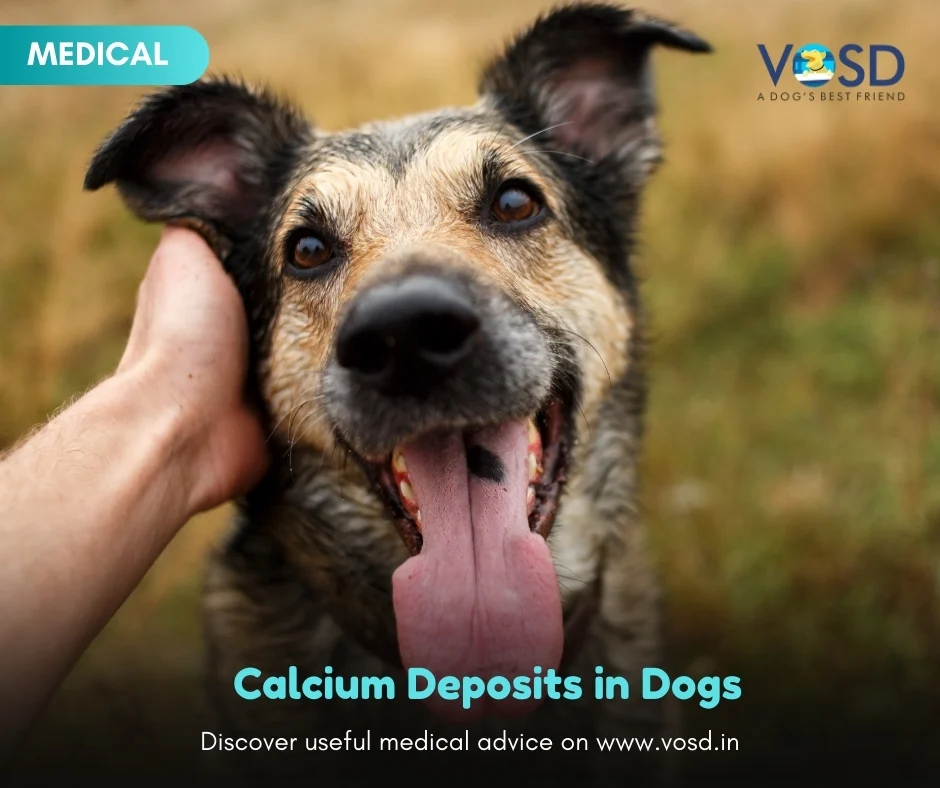Calcium deposits form stones or uroliths in the urinary tract, and this is also known as Urolithiasis. Such stones are common among male dogs and can be removed easily and safely. As these stones move through the urinary tract, they can become stuck between the kidney and bladder or in one of the ureters or urethra. When there are high calcium levels in your dog’s urine, they become mineral deposits or stones. Stones of calcium oxalate are found to be hard and may need surgical removal.
Symptoms of Calcium Deposits in the Urinary Tract in Dogs
Urolithiasis are usually asymptomatic. But, they do cause a lot of pain if the calcium deposits enter the ureter or urethra, and your dog will have great difficulty urinating. If the stones cause a severe blockage, the symptoms can become life-threatening. Symptoms include
- Reduced urination
- Difficult urination
- Painful urination or dysuria
- Bloody urine or hematuria
- Pain in the abdomen
- Distention of the abdomen or Bloat
- Lethargy
- Vomiting
- Weakness
Different Types of Mineral Deposits in the Urinary Tract in Dogs
Calcium deposits are only one form that causes stones in the urinary tract of dogs. Other types of deposits may cause Urolithiasis.
- Struvite stones found mostly in female dogs
- Calcium Oxalate stones that is made of calcium and oxalate bound together and is found mostly in male dogs
- Urate stones made of ammonium urate and form the next common type in dogs after calcium oxalate.
Causes of Calcium Deposits in the Urinary Tract in Dogs
It is normal to find calcium and oxalate in your dog’s urine. But, when the levels of calcium and oxalate increase, hypercalciuria develops in dogs. Stone formation soon follows. There are a few causes of increased calcium levels in urine.
- A high content of calcium in your dog’s diet
- Excessive calcium gets excreted from your dog’s kidneys.
- Large quantities of calcium get released into the blood from skeletal deposits though this is rare.
- Lack of fluids
It is not yet known why stones develop. In similar conditions, only some animals develop stones. But, there may be a higher risk of having calcium oxalate stones in a few cases.
- Smaller dogs
- Breed-specific such as Miniature Schnauzers, Lhasa Apsos, Yorkshire Terriers, Miniature Poodles, Maltese, Pomeranians, etc.
- More common in male dogs
- Common among dogs between five and nine years old
Diagnosis of Calcium Deposits in the Urinary Tract in Dogs
The diagnosis of Urolithiasis will depend on the symptoms. Your dog’s Vet will start with a physical examination, and the stones may be just hard enough to be felt on touch. Your dog may be in pain and make it harder for the Vet to do the physical exam. In some cases, the stones formed from calcium deposits may also cause bladder infections, and the entire area may feel hard and will be swollen.
You will be required to give your dog’s medical history along with a list of symptoms and their onset. Your dog’s breed and family details may also be relevant. The Vet will order complete blood work to check into blood calcium levels and see if the kidneys are functioning normally.
The Vet will order an X-ray to view the stones and their exact location. X-rays are particularly helpful if the stones are in the kidneys and your dog shows no symptoms. The Vet will also order a urinalysis to identify the type of stones in your dog. If your dog has calcium oxalate stones, the urine will be acidic with a pH below 6.5. The urine will be in high calcium content, with small crystals of calcium oxalate. If the Vet finds high levels of white blood cells in the urine, the diagnosis will include infection. Such a condition is often secondary to calcium oxalate stones.
Treatment of Calcium Deposits in the Urinary Tract in Dogs
Surgery to remove the stones is usually the most common method. If the stones are in the lower urinary tract, they can be removed with minimal invasion. But, some stones are grainy in nature, and the small crystals can become embedded in the bladder. The crystals will need to get flushed out during the surgery, although there are chances of recurrence. The entire procedure will require your dog to be hospitalized and monitored. After returning home, your dog will still need to have restricted activity to heal from the surgery. Further, antibiotics will be prescribed to keep infections at bay.
However, if the stones are found in the kidneys, surgery may be a risk. Many Vets choose less risky treatment through antibiotics and regular and frequent testing.
If your dog has small stones that may not get passed naturally, the Vet will recommend flushing them out by urohydropropulsion. Small stones may be massaged out of the system by using a catheter and fluids. If necessary, the Vet may use cystoscopy, which uses a tool to break the stones into smaller pieces. This procedure will require a specialist.
Recovery from Calcium Deposits in the Urinary Tract in Dogs
Generally, dogs will make a complete recovery if the stones are removed. The recovery may include diet changes to prevent a recurrence. A primary change would consist of increasing fluid intake as it can reduce mineral concentration in the urine. Feeding your dog wet instead of dry food can also help increase fluids in the body. If your dog does not have other health problems, the Vet may ask you to give a high sodium diet so that the dog will naturally drink more.
Calcium and Oxalate are two important elements and would need to be appropriately balanced; therefore, any changes made to them in the diet will require the Vet’s oversight before alteration.
Additionally, if your dog is on a diet that has less calcium, he or she would need keen monitoring to ward off nutritional deficiency.
Disclaimer:
The information contained in VOSD Vet Advice™ is not intended nor implied to be a substitute for professional medical action which is provided by your vet. You assume full responsibility for how you choose to use this information. For any emergency situation related to a dog’s health, please visit the nearest veterinary clinic.








